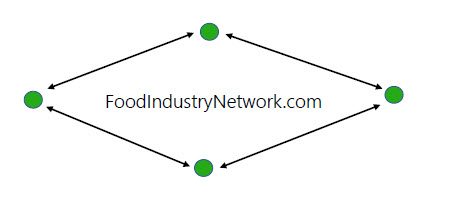Are your kids safe on the farm?

There’s good and bad news on Canada’s farm injury front.
Read Also
Lactanet embarks on LPI modernization process
A long-standing tool for predicting the milk production performance of dairy cattle daughters will be “modernized” to make it more…
Deaths on farms or related to farming practices dropped an average of 1.4 per cent annually from 2011 to 2020, according to data from the Canadian Agricultural Safety Association (CASA).
However, there were 624 agriculture-related deaths in that period, an average of 62 per year.
Of those who died under the age of 30, children from one to four years old accounted for both the highest base number and the highest rate of death of any age category.
A total 26 kids in that age range died over the period, with a rate of 9.4 for every 100,000 people in the farm population.
Why it matters: Farming is one of few industries where family life and work life are often one and the same, and while that brings a lot of benefits to farm kids, it brings additional risks too.
There was another spike on the other end of the age range where most fatal farm incidents were reported. Ages from 50 to 79 encompassed the top three decades for farm deaths between 2011 and 2020, ranging from 103 in those 50-59 years to 124 who were between 70-79 years when they died.

As Colleen Drul, a representative of the University of Alberta’s Injury Prevention Centre emphasized in her presentation of the CASA data, “there’s still work to be done.”
Children ages one to four were also disproportionately represented in the bystander runover category, which measures the number of fatal agriculture-related bystander runovers by age. There were 12 deaths in that category in the 10-year period and a rate of 4.3 per 100,000 farm population.
“(The bystander category) is the one that really identifies we’re not doing a very good job when it comes to children,” said Drul, adding she has read the circumstances surrounding these fatalities.
“It’s really quite sad. The child is on a parent’s knee and then somehow something happens and the child comes out of the tractor and gets run over. Or children are sitting in the scoop of a front-end loader. It hits a rock and they bounce out and subsequently get run over.
“So it’s really quite tragic that these children are dying because of runovers.”
The report is a product of CASA and Canadian Agricultural Injury Reporting (CAIR), through an integrated national surveillance project.
CAIR was established in 1995 in response to the need for better information about fatal injuries and those requiring hospitalization in Canada’s agriculture sector.
“Basically, there are three main mechanisms of injury: machinery rollover, machinery runover and entanglements or being caught,” said Drul.
Looking farther back, from 1990 to 2020, machinery rollover was a major cause of fatal ag-related injuries, with 15 per cent of incidents occurring in the spring, 16 per cent in summer, 17 per cent in fall and 13 per cent in winter.
“This would be caused by such things as (travelling) too close to an edge or incline. And it’s often the tractor that is the machine involved in the actual rollover,” said Drul.
From 2011 to 2020, rollovers were further divided between the top three immediate causes. These included traveling close to the edge with a steep drop (26 incidents), traveling on an incline (17 incidents) and towing (seven incidents).
“There were 24 other fatalities in eight other categories that were not included in this. So this is just the high level and one of the main three causes of these rollovers,” said Drul.
Machinery runovers were another common cause of death, with nine per cent occurring in spring, 18 per cent in summer, 15 per cent in fall and nine per cent in winter, when there isn’t as much equipment-related farm work.
“This is where an individual is run over by a piece of equipment. This can include everything from unmanned tractors and cold starts to inadvertently running over children that are in the work environment,” she said.
The entangled or caught in machinery category only showed twice in the top three mechanisms of injury between 1990 and 2020.
“There’s lots of moving parts on farm machinery and lots of opportunity for either clothing and/or the individual getting caught up in machinery,” said Drul.
“It was significant in the fall, where we have farmers going in to remove or impact things that are impacted in combines and augers and inadvertently get tangled or caught up in that practice.”
When it came to agriculture-related deaths by sex, males far outpaced females at 91 per cent from 2011 to 2020. By age, 289 fatalities were men 60 and older, with another 186 among men 25 to 59.
Drul pointed out the difference between number of deaths and rate of death. For example, while those in the 70- to 79-year age group experienced the greatest number of ag-related deaths, they did not have the highest death rate.
For the 70- to 79-year-old cohort, death rates per 100,000 of the farm population came in at just under 30. The 80-plus cohort had the highest rate of fatalities at around 45.2, even though the actual number of deaths was 57.
“When we look at that, in comparison to the population of those age groups, those 80 years of age and older had the higher rate,” said Drul.
Another category was fatal agriculture-related injuries by relationship to the owner or operator. Those numbers spanned 2011 to 2020, a time represented throughout the remainder of the report.
Owners or operators represented 288 fatalities, followed by hired workers at 58 and children of operators at 57 fatalities.
Fatal agriculture-related injuries by relationship to agriculture-related work counted 581 (94 per cent) work-related deaths. Non-work-related deaths in this sub-category made up the remaining 37 fatalities.
“Those (non-work-related fatalities) often involved more recreational-type activities such as driving around on an ATV or maybe horseback riding. Those are activities involved with being on a farm but weren’t work-related,” said Drul.
Most fatalities in this sub-category involved traffic-related deaths such as collisions with farm equipment.
The category also featured fatalities among victims that were working (531 people) versus victims that were not working (84).
Those in the latter statistic were often children, said Drul, and again activities such as riding ATVs, horseback riding and drowning in dugouts were among the causes.
“It was something involved in the hazards of being on a farm environment,” she said.
There were 410 machine-related deaths versus 214 non-machine. Tractors were by far the top machine involved in ag-related deaths at 180. This was followed by motor vehicles with 40 fatalities and off-road vehicles at 33.
– Jeff Melchior is a reporter with the Alberta Farmer Express.
Source: Farmtario.com

